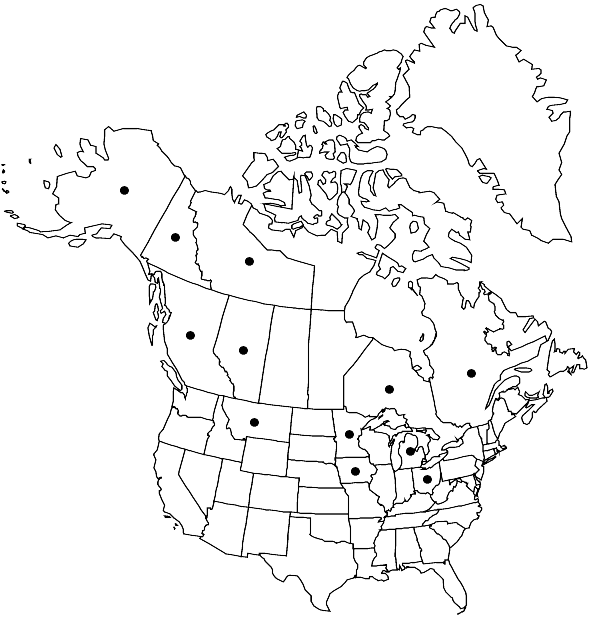Tortella inclinata var. inclinata
Stems stems yellow or green, rather pale, brown proximally, yellow in KOH, to 1 cm, not to few-branched, tomentum usually conspicuous. Leaves irregularly twisted and incurved when dry; majority of leaf apices obtuse, strongly cucullate, mucro of 1–3 cells; with cross section with adaxial and abaxial superficial walls the same width as the cross-walls; leaf cells 10–12 µm, papillae not elevated.
Phenology: Spores mature spring (late May).
Habitat: Exposed calcareous silt, sand or other loosely consolidated substrates where it functions as a pioneer species, frequently near bodies of inland fresh water, gravel bars, among pebbles on river banks, mud flats, sand dunes on the Great Lakes, also gravel pits near bogs and sandy clearings in mixed deciduous woods or spruce-pine groves, highway ditches
Elevation: low to high elevations (200-1900 m)
Distribution

Alta., B.C., N.W.T., Ont., Que., Yukon, Alaska, Iowa, Mich., Minn., Mont., Ohio, South America, Europe, Asia, Africa, Australia.
Discussion
Variety inclinata, var. densa, and Tortella rigens are very similar in their tubulose and frequently cucullate leaves, and the groove of elongate, smooth cells on the adaxial surface of the costa extending throughout the leaf. In North America, var. inclinata appears to be restricted to calcareous silt, typically where streams flood (W. C. Steere 1978). It also inhabits larger sediments, such as the coarse sands along the Great Lakes beaches and rivers. It characterizes areas in flood zones lower than those of var. densa, which also colonizes sandy soil, but in the crevices of rocks in hilly stations. Tortella humilis, which might possibly be confused with these varieties, has a distinct stem central strand. The strikingly differentiated perichaetial leaves of var. inclinata occur only in association with fertilized archegonia. In var. inclinata the setaceous perichaetial leaves may be conspicuous on dry stems where they rise more stiffly above the curled stem leaves—as is true of those of T. alpicola, T. fragilis and T. tortuosa. Such perichaetiate plants, though uncommon, are easy to confuse with sterile or fertile T. fragilis, but the setaceous leaves of that species have propaguloid modifications in the apex whether barren or fertile.
Selected References
None.